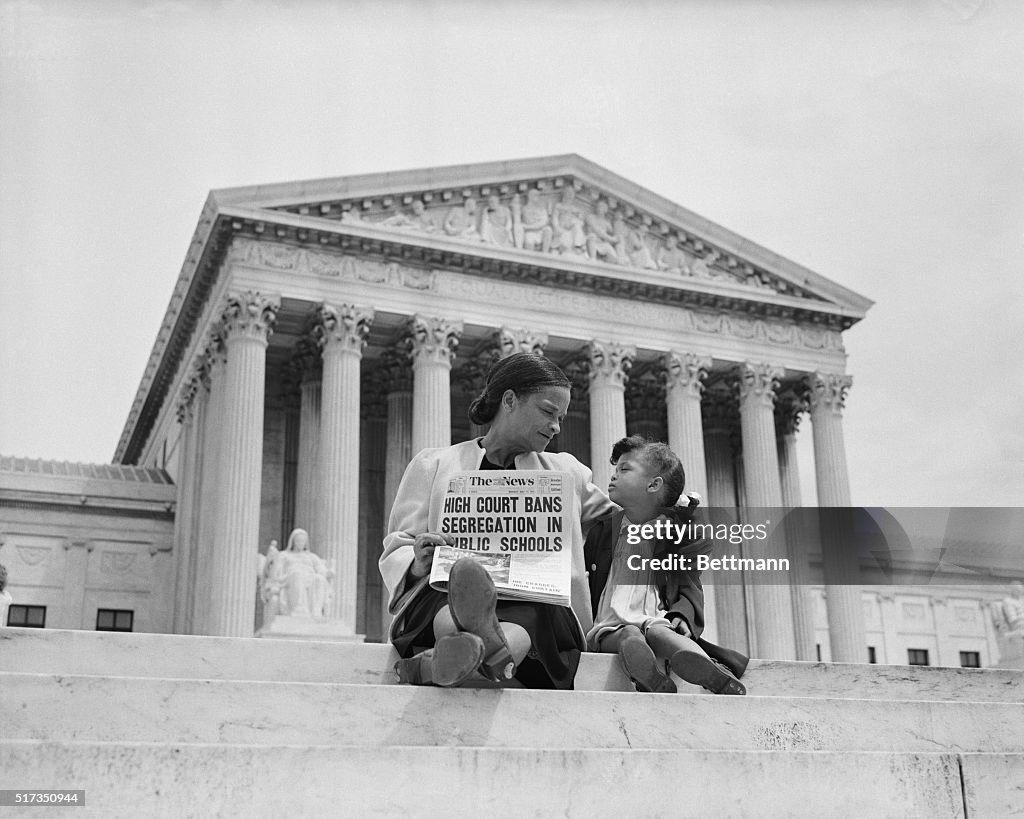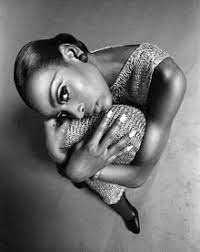Five Firsts of Black History
Firsts of Education Rights
by Sunshine Finnell
Image via Getty
The African American community has had to go through hell and back to just simply live a normal life like everyone else. One of the biggest accomplishments that has helped paved the educational success of the black community today is the first black man and woman who graduated from college. John Chavis was born in 1762 as a free man in North Carolina. It is known that he served in the Revolutionary War and after enrolled in the College of New Jersey (now Princeton University) in 1792 to study ministry. After three years he transferred to Washington Academy (now W&L) and in 1799 he graduated with honors. In the early 1800s he became licensed by the Presbyterian church as the first African American preacher. He was such an inspiration that a 1924 article in the New York Times called Chavis, “Without any expectation the most remarkable black man who ever lived in the United States.”
Mary Jane Patterson was the first African American woman to graduate from college. She was born a slave in 1840 and at some point in her early years the Patterson family ended up in Oberlin, Ohio. Mary attended Oberlin College which offered a two-year course for women, although she refused and insisted on taking “the gentleman’s course” of study. She successfully graduated with honors in 1862 with a bachelors degree. Patterson worked her way up as a teacher and eventually became the first African American principal at a preparatory high school for African-American youth in Washington, D.C.
The term “separate but equal,” was used to describe various forms of discrimination against African Americans in day to day life in the mid-1900s. Even in the school system black children were taught more about the “Blacks Only,” bathroom/water fountain signs rather than actual educational material in the classrooms. It was not until May 17th, 1954 U.S. Supreme Court Justice Earl Warren delivered the unanimous ruling in the landmark civil rights case Brown v. Board of Education of Topeka, Kansas. The ruling was that state-sanctioned segregation of public schools was a direct violation of the 14th Amendment deeming it as unconstitutional. Finally, all races could in the same room to learn and this was the very beginning of the needed changes for African American education rights.
Firsts of Fashion
by Knia Robinson
Image via Life Magazine
Born the youngest of 3 daughters in Oxford, Mississippi and raised in the foster care system, Naomi Sims became the first black supermodel in the United States in 1969 at the age of twenty-four. At the time, she was attending the Fashion Institute of Technology on scholarship while also taking night classes at NYU to develop her diverse interests in business, fashion and technology.
Sims had been 5’10” since she was fourteen years old, and her interest in fashion led her to pursue various agencies during her time in New York. Despite her talents and knowledge of the industry, she was rejected by every agency she pursued who reasoned that her skin was ‘too dark for print.’Ambitious to the core, Naomi decided that if she couldn’t get agencies to represent her, she would go straight to fashion photographers. She ended up being printed on the cover fashion supplemental in the paper in August of 1967.
Soon after, Naomi Sims became one of the first models signed to Wilhelmina Fashion Agency and later became the first black model to appear of the cover of Life Magazine on October 17, 1969. By the 70s Sims had reached worldwide acclaim and had piqued the interest of notable Hollywood directors to begin appearing in popular film roles such as the lead in Cleopatra and Jones. However, Campbell turned down these offers for their stereotyping of the black community and instead, retired from fashion at the age of 25 to start her own business which expanded into a multimillion dollar beauty empire.
Sims remains to this day an inspiration for notable supermodels such as Tyra Banks, Beverley Johnson, and Naomi Campbell. She is considered to be, not just the first black supermodel but the ambassador to all who came after her.
Firsts of Film
by Knia Robinson
While Hattie McDaniel was the first black person to receive an oscar at the 12th academy awards in 1940, during in a time where it was typically illegal for her to be in the room, she represents a complicated historical reality in which the most notorious black actors of the time had to feed into offensive and problematic stereotypes in order to receive recognition and acclaim. While McDaniel attempted for much of her career to get out of these minstrel roles in films, the biases held by producers and audiences alike prevented her from stepping outside of these stereotypes.
A generation later, Bahamian born actor, Sidney Poitier, was the second black actor to receive an academy award for his role in the 1964 film, Lilies of the Field at the age of 37. The film depicted the unexpected bond between an unemployed Handyman and five German nuns in rural Arizona. This was a landmark film not just because of Poitier’s oscar, but because it was the first to depict a black man as a “free citizen” and a whole human who interacts with and makes a difference in the world rather than standing in as a representation for an entire race.
Poitier would continue to define his career in landmark films such as: A Raisin in the Sun (1961), which references Langston Hughes popular poem “A Dream Deferred” in its depiction of the struggles of a black family pursuing a better life in the world of federally enforced racial segregation; Guess Who’s Coming to Dinner (1967), which was the first film to portray the an interracial couple only six months after the legalization of interracial relationships; and In the Heat of the Night (1967), a film about a black police officer wrongly accused of a terrible crime when he comes face-to-face with a racism of the justice system.
Though Poitier wasn’t expected to live past infancy, he ended up living a long life, dying only recently in January of 2022 with the legacy of dedicating his career to bring the civil rights movement to the big screen.
Firsts of literature
by Sunshine Finnell
Image via Brittanica
Words connect people from all over the world. Sadly, during slavery, many African Americans were not allowed/taught how to read and write. Philis Wheatley Peters was the first African American woman to publish a book of poems. She was born in Gambia, Africa in 1753 and was captured by enslavers and was brought to America in 1761. Upon arrival, she was sold to the Wheatley family in Boston, Massachusetts where they started educating her. Within two years she mastered English and began writing an enormous amount of poetry. Her first book, Poems on Various Subjects, Religious and Moral, was published in 1773 when she traveled to London with the son of her enslaver. The same year she became a free woman and an inspiration for racial freedom for black people all over the world.
Jarena Lee was the first African American woman to write/publish a spiritual autobiography called, The Life and Religious Experience. She was born in 1783 in Cape May, New Jersey to a free black family. As a teenager, she moved to Philadelphia, Pennsylvania to continue work as a domestic servant. While there she attended a worship service at Bethel Church where she fell in love with Christianity. As years went on she fought for women’s right to preach in ministry and one day Bishop Allen finally gave her the permission to preach the Gospel. She began to travel from city to city for preaching engagements and realized she had to get her message out there worldwide somehow, which is why she picked up a pen and poured out her heart into her incredible autobiography.
William Wells Brown was the first African American to publish a novel called, Clotel/The President’s Daughter. He was also the first African American to write a play. He was born in 1814 near Lexington, Kentucky to an enslaved black mother and a white slavemaster as a father. He escaped in 1834 and adopted his name after a Quacker, Wells Brown, who aided him as a runaway. He settled in the Great Lakes region before moving to the Boston area. He began to educate himself and before he wrote his novel he even wrote an autobiography called, Narrative of William W. Brown, a Fugitive Slave. His novel Clotel depicts the destructive, long-lasting effects of slavery on African American families as well as the harsh experience of biracial Americans like himself. The book portrays the relationship between the slaves and the slave master in the United States of America and is an incredibly powerful story.
Firsts of Music
by Knia Robinson
It is well known that music is the cornerstone of black history, originating from the slave songs sung on plantations prior to the civil war and abolitionist movement. Essential to the legacy of the Underground Railroad who used singing as their main form of communication with black bodies escaping from the enslaved south into the free north. Music is a translation of our history as plantation songs turned into Ragtime during the era of reconstruction when the thirteenth amendment was passed which became among the most popular genres of music for the remainder of the nineteenth and into the twentieth century.
On the foundations of Ragtime, Jazz was invented. Although there were several popular white jazz artists in the early years of the genre, it was more popular among black and white audiences alike within the clubs of Harlem in the early twentieth century. Later, Ella Fitzgerald and Count Basie, also coined the First Lady of Song and the King of Swing respectively, were the first black artists to win grammys for best jazz album at the very first award ceremony.
The genre of jazz was dominated by black artists, but it would take until Stevie Wonder’s 1974 album Innervisions to win album of the year, making him the first of only eleven black artists in the sixty six year history of the grammys to do so. A musical prodigy raised in Saginaw, Michigan, “Little Stevie Wonder” was signed to Motown records and made his debut album at the age of twelve. He was skilled in piano, drums, harmonica, and even the organ and quickly grew in national popularity, receiving his titular award at the age of twenty-three. Wonder won the award for best album again the following year and became the second artist in grammy history to win two years consecutively.
His musical skill and creativity would go on to inspire the creation of entire genres such as funk, r&b, and hip hop. Wonder entered the Rock and Roll Hall of Fame in 1989 and received the Presidential Medal of Freedom in 2014. Now, at the age of 73 Wonder remains not just one the most influential musicians, but one of the most influential people of all time.
Strike Out.
Writers: Sunshine Finnell and Knia Robinson
Copy Editor: Sarah Singleton
Chattanooga



